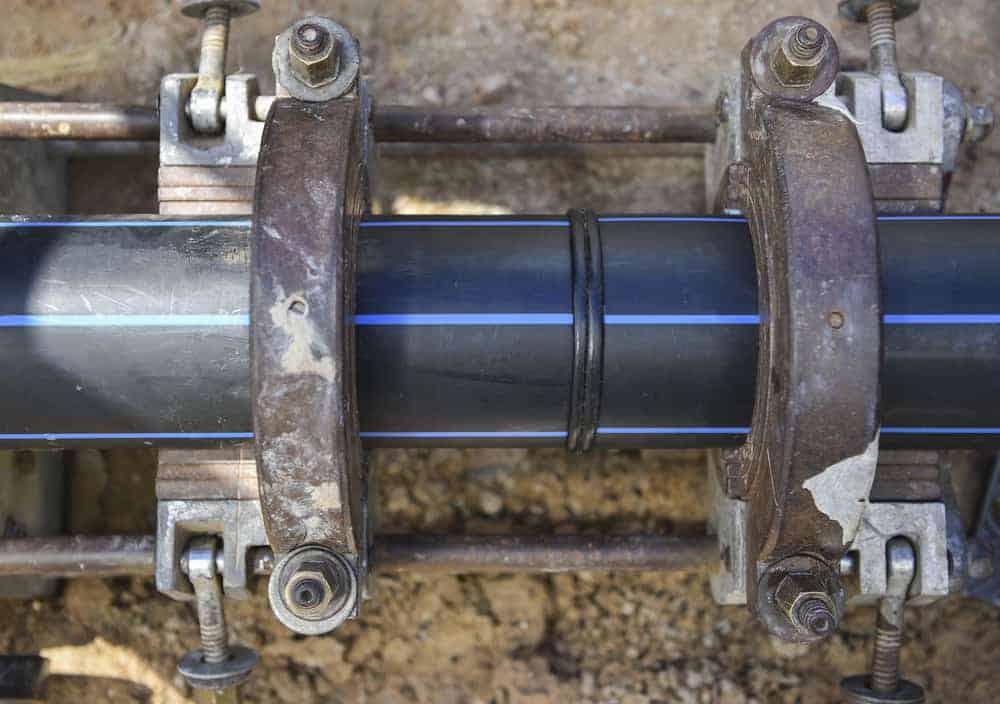HDPE Welding in the Petroleum Industry

HDPE or high-density polyethylene pipes and fittings continue to be one of the most preferred materials for use in industrial water supply and petroleum systems. Especially in low-pressure systems, HDPE properties have offered a wide range of advantages and have been used in the replacement of traditional carbon steel pipe systems. Along with strength and chemical resistance, HDPE provides ideal weldability, facilitating leak-preventative options for critical applications. However, the fusion of HDPE through welding can lead to flaws that can pose potential threats to structural integrity if undetected. Reliable non-destructive testing (NDT) of HDPE welding should be used to detect these flaws and to ensure the quality and structural integrity of the system.
Fusion Welding of High-Density Polyethylene
Generally easy to handle and fuse, HDPE pipes are installed for gathering and transporting hydrocarbons in the oil and gas industry. HDPE also provides other benefits with its abrasion resistance, durability, strength, and serviceability. The chemical stability of HDPE allows it to be used in the petroleum stream without having any reaction to the chemicals. However, to ensure the safety and reliability of the pipe system, the quality of the weld joint should be optimal.
Usually, joints in HDPE pipes are fused via butt welding which involves an extensive heating and pressure process. The two pipe ends to be joined are heated and pushed together to form a bond. Although the weld may seem pretty seamless, it can have a flaw similar to that of a metal weld, such as:
- The presence of dust or grease due to lack of weld preparation can be the cause of inclusions or porosity in a joint. This can give rise to cracks or affect the fusion in the weld.
- Inadequate heat or strength or misalignment while joining the pipe ends can cause a “cold joint” which indicates the lack of bond in the weld.
Flaws that are not visually identified can possess an even greater risk to the system and be the source of potential failure. For more refined flaw detection, NDT technology is essential.
NDT Inspection of HDPE Welding
Inspecting material like HDPE can differ from assessing material like steel. HDPE has very high attenuation, so, high-frequency ultrasonic technology isn’t ideal for inspection. Unlike metals, it is also difficult to properly achieve appropriate refraction from HDPE as its velocity and acoustic impedance are similar to that of the material in the ultrasonic wedges.
Flaws due to poor welding in HDPE pipes can be identified using a lower-frequency ultrasonic testing (UT) method. The phased array ultrasonic testing (PAUT) method applying both pulse-echo and tandem techniques as well as and time-of-flight diffraction (TOFD) have offered high sensitivity in the volumetric inspection of HDPE welding. TOFD with PAUT allows technicians to:
- Inspect larger fusion areas including the weld area and the heat-affected area.
- Identify minor flaws and irregularities due to greater sensitivity.
- Use a focused beam to reduce the effect of thickness variation or surface irregularity produced during the weld from the detection of flaws.
- Conduct easier and faster high-resolution scanning for detection of embedded flaws, contamination, and cold fusion to reduce the time of inspection.
Quality HDPE Inspection
HDPE pipe quality can be ensured by monitoring the system for potential flaws due to welding through visual or non-destructive testing. TOFD with PAUT helps technicians in achieving optimal sensitivity for inspection of flaws associated with HDPE welding. Accurate identification of potential flaws has allowed the oil and gas industry to ensure productivity through safe and reliable operations.
Zetec is a leading provider of NDT solutions specializing in ultrasonic testing and many other inspection technologies. Our solutions offer excellent flaw detection in the inspection of HDPE welding. For quality equipment and tailored inspection plans, contact us today to learn more.
